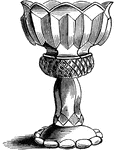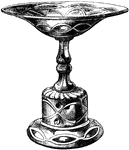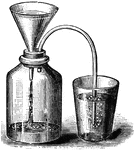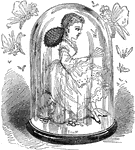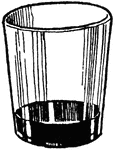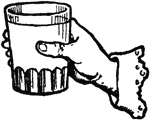
Air-Pump
"The general scheme of Geisler's pump is shown here. A and B are pear-shaped glass vessels connected…
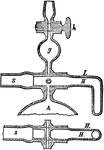
Air-Pump
"The general scheme of Geisler's pump is shown here. A and B are pear-shaped glass vessels connected…

Air-Pump
"This was invented in 1865 by H. Sprengel. The instrument, in its original (simplest) form, consists…

Antique Glass Ampulla
This Antique glass ampulla is similar to the amphora with handles. It is painted in striped bright blue…
Barometer
"A glass tube about 33 inches in length, open at one end, is completely filled with mercury, and being…
Barometer
"A cistern barometer, being that generally seen in weather-glasses or ordinary barometers. The tube…

Barometer
"...being merely a tube of glass, nearly filled with mercury, with its lower end placed in a dish of…

Antique Bottle
This Antique bottle is a small watch shaped perfume bottle. Made out of blue and white glass, it has…

Four Sided Bottle
This four sided bottle is a rigid container. A glass bottle is a bottle created from glass. Glass bottles…

Old German Bottle
This Old German bottle is made out of glass found in the Spessart region in Germany.
Glass bulb
"An air thermometer consists essentially of a large glass bulb at the upper end of a tube of small but…
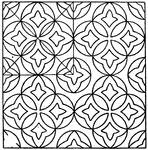
Marble Mosaic Circle Pattern
This marble mosaic circle pattern is inlaid pieces of glass found in the windows of a cathedral in Florence,…
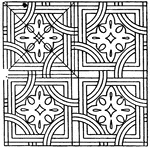
Marble Mosaic Circle Pattern
The marble mosaic circle pattern is inlaid pieces of stone, wood, glass, leather or straw to make a…
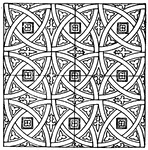
Medieval Tile Circle Pattern
This Medieval Tile circle pattern is a stained glass design. It the oldest process of fitting together…
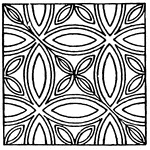
Medieval Tile Circle Pattern
This medieval tile circle pattern is a stained glass design. It the oldest process of fitting together…
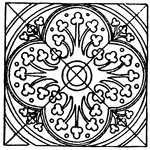
Medieval Tile Circle Pattern
This medieval tile circle pattern is a stained glass design. It the oldest process of fitting together…
Compressed Air Manometer
"The compressed air manometer consists of a strong graduated glass tube of uniform narrow bore, closed…

Unique Pattern Glass Dish
This is an ornamental container for drinking. A chalice is a goblet or footed cup intended to hold a…
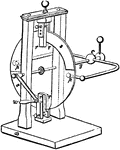
Electrical Machine
"The electrical machine most usually employed consists of a large circular plate of glass, mounted upon…
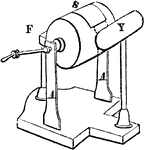
Electrical Machine
"A form of an electrical machine. S being the glass cylinder turning on an axis, Y the conductor, F…
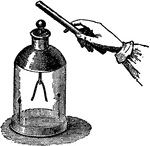
Gold Leaf Electroscope
"Gold leaf electroscope; it consists of two strips of gold foil suspended from a brass rod within a…
Two Objects Falling in a Vacuum
"Remove the air from a high glass tube by means of an instrument called the air-pump... Then... drop…

Foutain in Vacuo
"Draw out a piece of glass tubing to a jet, and push it through a perforation in a cork that snugly…

Glass Blowing and Stretching
In making sheet glass, a very large lump of molten glass is gathered on the rod as is shown at (a).…

Glass Cutter
"The cylinder is placed vertically in the jaws of a cutting instrument, having a diamond cutter, pressing…

Glass Cutter
"Now the splitting is done with a diamond cutter fixed in the fleft of a stick and guided from end to…

Glass Cutter
"In the arrangement of the flattening and annealing ovens numerous improvements have been effected,…
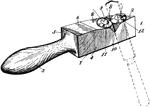
Combined Knife and Scissors Glass Cutter
This is a combination tool featuring a glass cutter and knife. A glass cutter is a hand tool which aids…

Glass Furnace
"Glass is made by melting together sand, an alkali, and calcium carbonate in pots of fire-clay." Brownlee…

Mechanical Drawing Cross Hatching of Glass
Conventional cross hatching for glass for mechanical drawing.

Glass-snake
Found in the woods of the Southern States, the glass-snake has the head of a lizard, but the body resembles…

Egyptian Glassblowers
"The form of the bottle and the use of the blow-pipe are unequivocally indicated; and the green hue,…
